 Applying the prescription drug tazarotene (Tazorac) to chronic plaque psoriasis is more effective than using a placebo. But how does it compare to the age-old remedy, coal tar?
Applying the prescription drug tazarotene (Tazorac) to chronic plaque psoriasis is more effective than using a placebo. But how does it compare to the age-old remedy, coal tar?
Researchers from the All India Institute of Medical Sciences in New Delhi reported their findings during the International Congress of Dermatology. Continue reading Still useful: Coal tar for treating psoriasis →
 Pine bark extract is a dietary antioxidant supplement.
Pine bark extract is a dietary antioxidant supplement.
In this study, researchers at Stanford University School of Medicine, in California, attempt to correct past studies that they consider flawed. Continue reading No effect of pine bark extract on cardiovascular disease risk →
 Dr. Steven Schachter (photo) is Professor of Neurology at Harvard Medical School.
Dr. Steven Schachter (photo) is Professor of Neurology at Harvard Medical School.
He voices his view and challenges for CAM for the treatment of epilepsy in a recent issue of Current Opinion in Neurology. Continue reading The professor’s view of CAM and epilepsy →
 The American Physical Therapy Association is urging older adults to take a moment to complete a room-by-room checklist to identify and repair possible fall hazards in their homes and begin an exercise plan to reduce chances of falling and risk of injury.
The American Physical Therapy Association is urging older adults to take a moment to complete a room-by-room checklist to identify and repair possible fall hazards in their homes and begin an exercise plan to reduce chances of falling and risk of injury.
Let’s focus on the risks and consequences of falls among the elderly. Continue reading September 23rd is Falls Prevention Awareness Day →
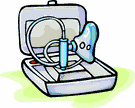 It improves quality of life even in patients with less-advanced cases of chronic obstructive pulmonary disease (COPD).
It improves quality of life even in patients with less-advanced cases of chronic obstructive pulmonary disease (COPD).
Researchers from Maastricht University Medical Center, in the Netherlands reported their results during the annual meeting of the American Thoracic Society. Continue reading Benefits of pulmonary rehabilitation on COPD →
 The haptoglobin (Hp) 2-2 gene is dysfunctional in people with diabetes and increases their risk of cardiovascular disease.
The haptoglobin (Hp) 2-2 gene is dysfunctional in people with diabetes and increases their risk of cardiovascular disease.
Researchers at Technion-Israel Institute of Technology, Haifa, Israel, tested the antioxidant vitamin E to protect diabetic patients with HP 2-2 from cardiovascular complications. Continue reading Reducing the risk of cardiovascular disease in people with diabetes →
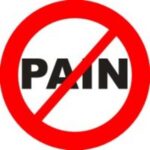 Researchers at the Universitetet i Oslo, tell us, “Since 2004, glucosamine has been available as a prescription drug [in Norway] for symptomatic treatment of mild to moderate osteoarthritis.
Researchers at the Universitetet i Oslo, tell us, “Since 2004, glucosamine has been available as a prescription drug [in Norway] for symptomatic treatment of mild to moderate osteoarthritis.
The aim of this study was evaluate the use of glucosamine on the need for analgesic drugs. Continue reading Failure of glucosamine to reduce the use of pain relieving drugs →
 GeriPal is rethinking advanced care planning (ACP).
GeriPal is rethinking advanced care planning (ACP).
Rather than focusing on making prespecified decisions, ACP should help patients and their families make the best possible in-the-moment decisions. Continue reading Advanced care planning: Accounting for changing perspectives →
 Aromatase inhibitors are a class of drugs used to treat breast cancer and ovarian cancer in postmenopausal women.
Aromatase inhibitors are a class of drugs used to treat breast cancer and ovarian cancer in postmenopausal women.
Now, the FDA is recalling the following supplements that illegally contain these drugs. Continue reading Consumer Alert: Aromatase inhibitors in dietary supplements →
 Because of differences in processing and nutrients, brown rice and white rice may have different effects on risk of type 2 diabetes mellitus.
Because of differences in processing and nutrients, brown rice and white rice may have different effects on risk of type 2 diabetes mellitus.
Researchers at Harvard Medical School, in Boston, examined white and brown rice consumption in relation to what is sometimes referred to as non-insulin-dependent diabetes (NIDDM) risk. Continue reading White rice, brown rice, and the risk of type 2 diabetes →
 Researchers from several US medical schools surveyed the students. Continue reading Survey of American medical students about CAM →
Researchers from several US medical schools surveyed the students. Continue reading Survey of American medical students about CAM →
 Dr. Mark Moyad (photo) is Director of Preventive and Alternative Medicine at the University of Michigan Medical Center in Ann Arbor.
Dr. Mark Moyad (photo) is Director of Preventive and Alternative Medicine at the University of Michigan Medical Center in Ann Arbor.
His recommendations. Continue reading CAM to treat the cold and flu →
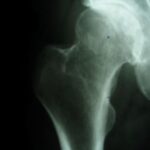 Researchers in Europe reviewed the evidence for glucosamine, chondroitin, and the combination to treat osteoarthritis of the hip or knee. Continue reading Review: Glucosamine, chondroitin, and osteoarthritis →
Researchers in Europe reviewed the evidence for glucosamine, chondroitin, and the combination to treat osteoarthritis of the hip or knee. Continue reading Review: Glucosamine, chondroitin, and osteoarthritis →
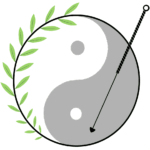 That’s the recommendation from Dr. Barrie Cassileth, who is chief of the integrative medicine service at Memorial Sloan-Kettering Cancer Center in New York City.
That’s the recommendation from Dr. Barrie Cassileth, who is chief of the integrative medicine service at Memorial Sloan-Kettering Cancer Center in New York City.
Highlights from the Medscape interview are listed below. Continue reading Acupuncturists treating cancer patients need extra education →
 It’s widely believed that cancer can be prevented by eating lots of fruits and vegetables.
It’s widely believed that cancer can be prevented by eating lots of fruits and vegetables.
Here’s what we really know. Continue reading Effects of eating more fruits and veggies on cancer risk →
 It’s a rare condition in which urination occurs during laughing. Researchers from North Shore-Long Island Jewish Health System, in New York studied the value of biofeedback in a small group of children. Continue reading Treating giggle incontinence →
It’s a rare condition in which urination occurs during laughing. Researchers from North Shore-Long Island Jewish Health System, in New York studied the value of biofeedback in a small group of children. Continue reading Treating giggle incontinence →
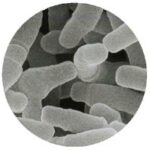 Researchers at Shanghai Jiao Tong University School of Medicine, in China report positive results with a simplified probiotic treatment regimen. Continue reading Preventing recurrent bacterial vaginosis with probiotics, conveniently →
Researchers at Shanghai Jiao Tong University School of Medicine, in China report positive results with a simplified probiotic treatment regimen. Continue reading Preventing recurrent bacterial vaginosis with probiotics, conveniently →
 There’s conflicting evidence on the value of Traditional Chinese Acupuncture (TCA).
There’s conflicting evidence on the value of Traditional Chinese Acupuncture (TCA).
Now, researchers at the University of Texas M.D. Anderson Cancer Center, in Houston report the influence of the acupuncturist on the response to treatment of osteoarthritis of the knee. Continue reading Influence of aucpuncturists on treatment outcomes in osteoarthritis →
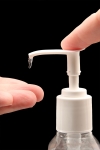 During the Interscience Conference on Antimicrobial Agents and Chemotherapy (ICAAC), researchers from the University of Virginia reported that regular use of alcohol-based disinfecting hand gels has little effect on the Swine flu infection rate. Continue reading Swine flu not affected by hand sanitizers →
During the Interscience Conference on Antimicrobial Agents and Chemotherapy (ICAAC), researchers from the University of Virginia reported that regular use of alcohol-based disinfecting hand gels has little effect on the Swine flu infection rate. Continue reading Swine flu not affected by hand sanitizers →
Complementary and Alternative Medicine: Fair, Balanced, and to the Point
 Applying the prescription drug tazarotene (Tazorac) to chronic plaque psoriasis is more effective than using a placebo. But how does it compare to the age-old remedy, coal tar?
Applying the prescription drug tazarotene (Tazorac) to chronic plaque psoriasis is more effective than using a placebo. But how does it compare to the age-old remedy, coal tar?
 Dr. Steven Schachter (photo) is Professor of Neurology at Harvard Medical School.
Dr. Steven Schachter (photo) is Professor of Neurology at Harvard Medical School.
 It improves quality of life even in patients with less-advanced cases of chronic obstructive pulmonary disease (COPD).
It improves quality of life even in patients with less-advanced cases of chronic obstructive pulmonary disease (COPD).







 It’s a rare condition in which urination occurs during laughing. Researchers from North Shore-Long Island Jewish Health System, in New York
It’s a rare condition in which urination occurs during laughing. Researchers from North Shore-Long Island Jewish Health System, in New York 
